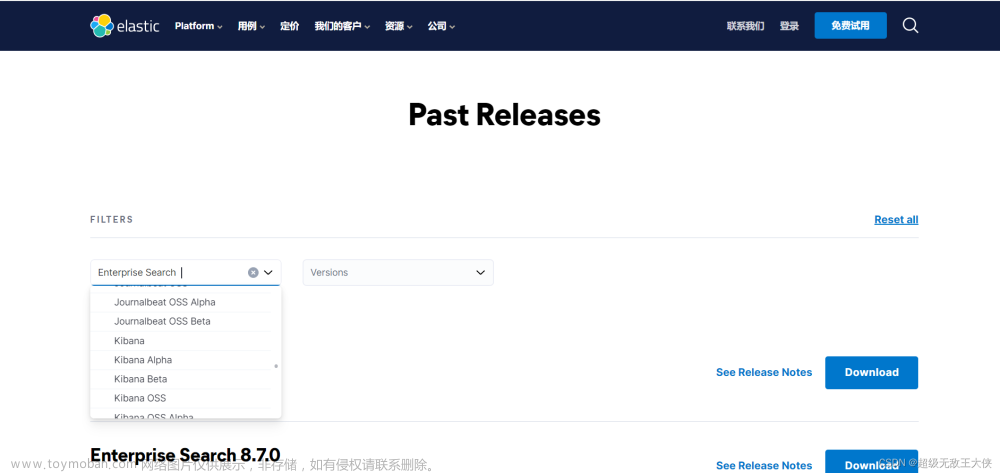一、Docker 安装 Nginx
# 1、搜索镜像
[root@localhost home]# docker search nginx
NAME DESCRIPTION STARS OFFICIAL AUTOMATED
nginx Official build of Nginx. 18765 [OK]
# 2、拉取镜像
[root@localhost home]# docker pull nginx
Using default tag: latest
latest: Pulling from library/nginx
a2abf6c4d29d: Pull complete
a9edb18cadd1: Pull complete
589b7251471a: Pull complete
186b1aaa4aa6: Pull complete
b4df32aa5a72: Pull complete
a0bcbecc962e: Pull complete
Digest: sha256:0d17b565c37bcbd895e9d92315a05c1c3c9a29f762b011a10c54a66cd53c9b31
Status: Downloaded newer image for nginx:latest
docker.io/library/nginx:latest
# 3、启动容器
[root@localhost home]# docker run -d --name nginx01 -p 80:80 nginx
902918d2f1c36de403e62fc8eb15ef873051838aabb838c16d14c1d6c2dc3b1a
# 4、测试访问
[root@localhost home]# curl localhost:80
<!DOCTYPE html>
<html>
<title>Welcome to nginx!</title>
//........
</html>
# 5、进入容器
[root@localhost home]# docker exec -it nginx01 /bin/bash
root@902918d2f1c3:/# whereis nginx # 寻找 nginx
nginx: /usr/sbin/nginx /usr/lib/nginx /etc/nginx /usr/share/nginx
root@902918d2f1c3:/# cd /usr/share/nginx/ # nginx 的路径
root@902918d2f1c3:/usr/share/nginx# ls
html
root@902918d2f1c3:/usr/share/nginx# cd html/ # 首页的位置
root@902918d2f1c3:/usr/share/nginx/html# ls
50x.html index.html
root@902918d2f1c3:/usr/share/nginx/html# cat index.html
<!DOCTYPE html>
<html>
<head>
<title>Welcome to nginx!</title>
<style>
html { color-scheme: light dark; }
body { width: 35em; margin: 0 auto;
font-family: Tahoma, Verdana, Arial, sans-serif; }
</style>
</head>
<body>
<h1>Welcome to nginx!</h1>
<p>If you see this page, the nginx web server is successfully installed and
working. Further configuration is required.</p>
<p>For online documentation and support please refer to
<a href="http://nginx.org/">nginx.org</a>.<br/>
Commercial support is available at
<a href="http://nginx.com/">nginx.com</a>.</p>
<p><em>Thank you for using nginx.</em></p>
</body>
</html>
二、Docker 安装 Tomcat
# 官方文档解释
# -it :交互模式
# --rm:容器启动成功并退出以后容器就自动移除,一般在测试情况下使用!
docker run -it --rm tomcat:9.0
# 1、下载tomcat镜像
docker pull tomcat
# 2、启动
docker run -d -p 8080:8080 --name tomcat9 tomcat
# 3、进入tomcat
docker exec -it tomcat9 /bin/bash
# 4、思考:我们以后要部署项目,还需要进入容器中,是不是十分麻烦,要是有一种技术,可以将容器内和我们Linux进行映射挂载就好了?我们后面会将数据卷技术来进行挂载操作,也是一个核心内容,这里大家先听听名词就好,我们很快就会讲到!三、Docker 部署 es+kibana
# 我们启动 es 这种容器需要考虑几个问题
# 1、端口暴露问题 9200、9300
# 2、数据卷的挂载问题 data、plugins、conf
# 3、吃内存 - "ES_JAVA_OPTS=-Xms512m -Xmx512m"
# 扩展命令
docker stats 容器id # 查看容器的 cpu 内存和网络状态
# 1、启动 es 测试
docker run -d --name elasticsearch -p 9200:9200 -p 9300:9300 -e "discovery.type=single-node" elasticsearch:7.6.2
# 2、启动之后很卡,使用 docker stats 容器 id 查看下 cpu 状态 ,发现占用的很大
CONTAINER ID NAME CPU % MEM USAGE / LIMIT MEM % NET I/O BLOCK I/O PIDS
214e2ced819d elasticsearch 0.42% 1.248GiB / 3.682GiB 33.90% 656B / 0B 115MB / 828kB 46
# 3、测试访问
[root@localhost home]# curl localhost:9200
{
"name" : "214e2ced819d",
"cluster_name" : "docker-cluster",
"cluster_uuid" : "ddHka58_T1CoTrl8-Kltjw",
"version" : {
"number" : "7.6.2",
"build_flavor" : "default",
"build_type" : "docker",
"build_hash" : "ef48eb35cf30adf4db14086e8aabd07ef6fb113f",
"build_date" : "2020-03-26T06:34:37.794943Z",
"build_snapshot" : false,
"lucene_version" : "8.4.0",
"minimum_wire_compatibility_version" : "6.8.0",
"minimum_index_compatibility_version" : "6.0.0-beta1"
},
"tagline" : "You Know, for Search"
}
# 4、增加上内存限制启动
docker run -d --name elasticsearch02 -p 9200:9200 -p 9300:9300 -e "discovery.type=single-node" -e ES_JAVA_OPTS="-Xms64m -Xmx512m" elasticsearch:7.6.2
# 5、启动之后,使用 docker stats 查看下cpu状态
CONTAINER ID NAME CPU % MEM USAGE / LIMIT MEM % NET I/O BLOCK I/O PIDS
60f6c9a3d757 elasticsearch02 0.62% 396MiB / 3.682GiB 10.50% 656B / 0B 30.2MB / 836kB 46
# 6、测试访问,效果一样,ok!
[root@localhost home]# curl localhost:9200
{
"name" : "60f6c9a3d757",
"cluster_name" : "docker-cluster",
"cluster_uuid" : "-mC76kR-RaCjxWTay9basA",
"version" : {
"number" : "7.6.2",
"build_flavor" : "default",
"build_type" : "docker",
"build_hash" : "ef48eb35cf30adf4db14086e8aabd07ef6fb113f",
"build_date" : "2020-03-26T06:34:37.794943Z",
"build_snapshot" : false,
"lucene_version" : "8.4.0",
"minimum_wire_compatibility_version" : "6.8.0",
"minimum_index_compatibility_version" : "6.0.0-beta1"
},
"tagline" : "You Know, for Search"
}
四、可视化
Portainer 是 Docker 的图形化管理工具,提供状态显示面板、应用模板快速部署、容器镜像网络数据卷的基本操作(包括上传下载镜像,创建容器等操作)、事件日志显示、容器控制台操作、Swarm 集群和服务等集中管理和操作、登录用户管理和控制等功能。功能十分全面,基本能满足中小型单位对容器管理的全部需求。
如果仅有一个 docker 宿主机,则可使用单机版运行,Portainer 单机版运行十分简单,只需要一条语句即可启动容器,来管理该机器上的 docker 镜像、容器等数据。
docker run -d -p 8088:9000 --restart=always -v /var/run/docker.sock:/var/run/docker.sock --privileged=true portainer/portainer访问方式:http://IP:8088,首次登陆需要注册用户,给 admin 用户设置密码:

单机版这里选择 local 即可,选择完毕,点击 Connect 即可连接到本地 docker:

登录成功,可以点击 local 看看本地的 docker 信息。文章来源:https://www.toymoban.com/news/detail-584640.html
 文章来源地址https://www.toymoban.com/news/detail-584640.html
文章来源地址https://www.toymoban.com/news/detail-584640.html
到了这里,关于Docker 安装 nginx 和 tomcat 并部署 es + kibana 和可视化的文章就介绍完了。如果您还想了解更多内容,请在右上角搜索TOY模板网以前的文章或继续浏览下面的相关文章,希望大家以后多多支持TOY模板网!











